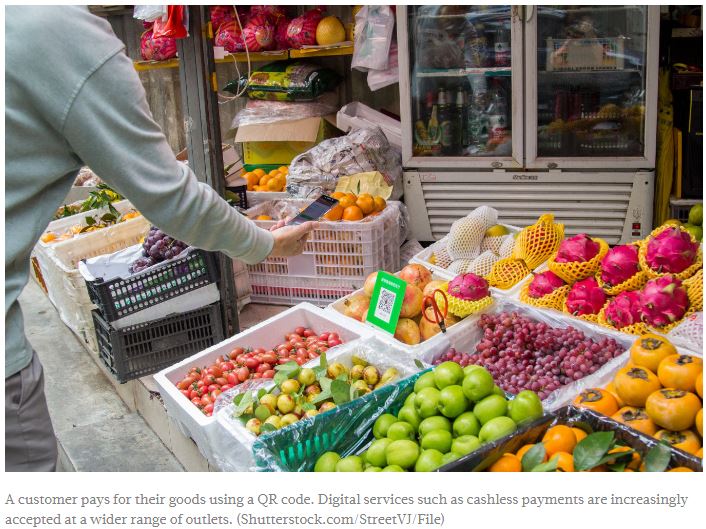Indonesia: Digital financial services booming but still lack users
Indonesia is the fastest-growing country in the Asia-Pacific region when it comes to the digitization of financial services, but its penetration remains the lowest in the area.
A recent report by global consulting firm McKinsey titled Digital Banking in Indonesia: Building Loyalty and Generating Growth, shows digital banking penetration has increased significantly.
In 2017, the number of bank customers who used internet or mobile banking stood at 58 percent as opposed to 36 percent in 2014.
However, only 5 percent of the population used digitized financial services in 2017. It was the lowest figure recorded in 15 Asia-Pacific countries observed by the firm. Myanmar, for example, was at 6 percent and Thailand at 10 percent.
“We have actually grown faster than emerging Asia-Pacific countries in internet banking, smartphone [ownership] and overall digital [service usage],” said Guillaume de Gantès, a partner at McKinsey’s Indonesia office.
Indonesians’ communal nature played a big part in the growth, he added, as they seek a social foundation in using digital services, thus boosting the number of users of such services at the same time.
“However, while we also have robust penetration of nonbank services, it has only penetrated about 5 percent of the population,” he said.
One of the reasons for such low usage, de Gantès said, was because Indonesians still favored services provided by conventional lenders over financial technology providers, such as peer-to-peer lending and payment systems.
Peer-to-peer lending was the business with the third highest number of complaints reported to the Indonesian Consumers Foundation.
Meanwhile, digital financial services tend to flourish more in areas where the physical flow of cash is more difficult, he added, pointing out that Australia and New Zealand’s digital financial service penetration was 17 percent and 54 percent respectively despite their similar economic profiles.
“However, we think this trend will change because for the first time last year, Indonesia had more smartphones than bank accounts,” said de Gantès. “The gap between smartphone and bank account ownership might reach 13 million by 2025.”
This trend, he said, parallels with the jump in smartphone ownership to 124 million or 57 percent of the population in 2017, compared to 33 percent in 2014.
According to the research, 55 percent of nondigital financial service users expressed that were likely to use digital banking in the near future. The figure is the second highest figure in emerging Asian countries after Myanmar.
While the firm does not have an estimate for the annual growth of digital financial services, de Gantès said it would require more players in the field. For instance, the payment system sector is dominated by only two players, Lippo’s OVO and Go-Jek’s Go-Pay.
“Indonesia, like India, remains a cash-intensive country, so [digital financial] solutions tend to be cash replacements,” he added.
Speaking on the same occasion, Indonesian Financial Technology Association managing director Mercy Simorangkir said there was a great lack of human resources in improving Indonesia’s digital financial services.
“The resources and talent side is particularly lacking in Indonesia,” Mercy said. “There is a great sense of urgency for more talent given how vastly the industry is growing right now.”
She also rejected the notion of conventional banks and fintech firms competing with each other, saying that players from both sides had been collaborating over the years.
“The industry and policymakers are also working hard to overcome the challenges in growing digital financial services,” she said.
Source: https://www.thejakartapost.com/news/2019/02/12/digital-financial-services-booming-but-still-lack-users.html


 English
English




